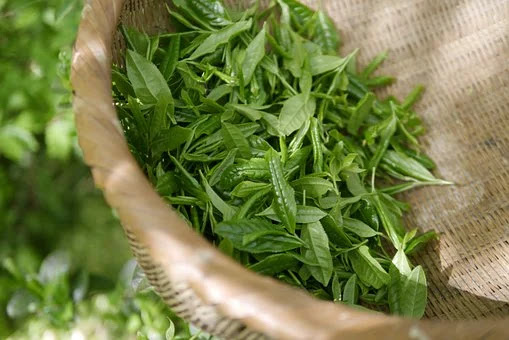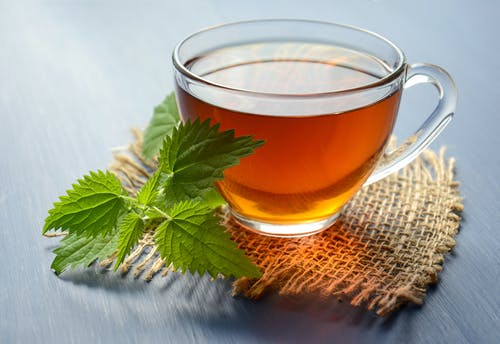30 interesting facts about tea
1. Tea was first utilized for medicinal purpose, that was served in beautifully painted Chinese cups. There is a legend behind the discovery of tea. According to folklore, tea was first discovered when tea leaves from some tea bushes suddenly blew into the boiled water, it was served by a servant to the Emperor Shen Nong, who was a herbalist also. Drinking the boiled water with the tea leaves, he enjoyed the flavor of tea very much & introduced the concept of drinking tea.
2. After water, it is tea which is the second most consumed beverage in the world. Tea is even greater consumed than coffee. Actually except the popularity of consuming coffee in the West, tea is more consumed by people from Middle East and Asia.
3. Although tea can be of several types including black, oolong, green, and white, they are all found from the same plant, Camellia sinensis. Actually the types of tea depend on how tea leaves are treated after they are harvested from the tea garden. Same process is applied on all tea leaves including withered, rolled, and heated. But different varieties are created depending upon the additional steps, or in the timing of the steps, that are taken before the tea leaves are packaged.
Black- This type of tea are most commonly consumed( almost 84% of totals worldwide). This type of tea is also processed most among all varieties of tea. During processing no artificial additives & unhealthy surgery are carried out. Rather, the leaves are left to ferment until they turn black, dried and packaged. The more fermentation that takes place in tea leaves, the more black they become. Hence, black tea is the most fermented of all teas.
Oolong- follows a similar process to black tea, however, each individual stage is not as long as the black one.
Green- No fermentation process is needed to prepare this kind of tea. This type of tea is either steamed or pan fried.
White- This type is the least processed of the four. It is picked earlier in the season and made from younger leaves. White tea leaves are typically left to dry briefly in the sun before being prepared for packaging.
4. During preparation of a perfect cup of tea, some factors are always keep in minds that try to avoid over-boiling of tea for avoiding the bitter taste of it. Always store tea properly so that it may not be degraded by heat, moisture and light. So a better quality of tea container should be taken.
5. Over 3 million tons of tea is produced per year worldwide.
6. The oldest Camellia Sinensis tea plant is in China. It’s thought to be 3,200 years old.
7. Tea contains “polyphenols” which are the antioxidants that repair cells and are said to improve our immune system against cardiovascular diseases, cancers, diabetes, osteoporosis and other potential ailments.
8. High levels of antioxidants present in tea can slow the absorption of caffeine. As a result a more gradual increase of caffeine occurs into the body system so that we are alert for a longer period and there is no resulting caffeine crash at the end in our body.
9. The country with the most tea consumption per capita is Turkey, followed by the likes of Morocco, Ireland, United Kingdom, Australia and the United States is at around 69th place to consume tea more frequently per capita in the list.
10. Normally there is a style or pattern while serving tea. Tea is basically served on a tray where a formal tea service would include; teapot plus an additional hot water pot, sugar bowl, milk jug, slow bowl and a number of teacups and saucers according to the requirement.
11. In the United States, around 85% of tea are sold predominantly as iced tea with added sugar.
12. It is amazing that both in Iran and Afghanistan tea is the national drink for them where they actually drink green tea to quench their thirst and black tea as a more hot beverage.
13. It has been believed that ginger-tea can aid in fighting cold symptoms, as well as morning sickness.
14. World's most expensive tea has actually been fertilized by the poop of the panda bear and the creator Anyang said the tea had additional nutrients that the Panda Bears had not taken advantage of.
15. In the 1600s, the Chinese embassy gifted tea to Tsar Alexis and it seems to the fact that this was the introduction of tea into russia.
16. Darjeeling tea is more expensive. There tea plants are grown largely in a 70 square mile area at the foot of the Himalayas.
17. In 1773, about 92 thousand pounds of tea were dumped into the Harbour by the Boston Tea Party. Predominantly that was made up of merchants and political change activists called Sons of Liberty. They were actually protesting against changes in tea tax laws and prices which enabled the British to directly undercut US merchants.
18. Since 2000, all dealers in Darjeeling tea must obtain a license directly from the Tea Board of India. They must then supply information on the production and manufacture of their tea.
19. Tea is known to be a natural source of fluoride which helps us to protect against both tooth decay and gum disease.
20. The most tea producing countries are China, Taiwan, Japan, India, Sri Lanka and Kenya. there are emerging and less well-known tea growing regions, such as Colombia, Nepal, Georgia, the US and the UK.
21. Ginger, lemon or cardamon cardamom can be added to the preparation of tea, as they enhance the flavor of of tea along with tea leaves.
22. Herbal drinks are not technically teas but rather they are sometimes called as tisane where fresh or dried herbs like mint, lavender are used to make tisane. They can be made from nuts, seeds, berries, flowers, leaves or roots. Tisane now commonly referred to any tea-style herbal infusion. Olive leaf tea is native to Italy where tea is made from Mission Olive Trees and Manzanillo. In the Middle East, a common tea is Moroccan Mint Tea. Simply add spearmint to Black tea during steeping.
23. Japanese Zen Buddhist tea ceremonies have been a feature of Japanese Culture since the 16th century. Similar to the early days of Afternoon Tea in England, there’s specified dress code and a specific way to prepare tea.
24. Green tea can help to soothe a sore throat, regulate blood sugar levels, and reduce the risk of heart disease.
25. Matcha Tea is a green tea that comes in powder form, used extensively in Japanese Tea ceremonies.
26. In the early 20th century the teabag was first invented in the United States. Teabags, which are generally made from filter paper or silk & tea bag is very useful for creating a perfect cup of tea.
27. Tea has numerous health benefits. It can lower risks of stroke, risk of depression, risk of diabetes, reduce chance of heart disease.
28. Tea provides a better flavor when tea leaves are allowed to expand. This is why all tea infusers allow space around the tea contained within it.
29. The Dutch East India Company introduced Tea into the West. It was called Tay or Cha, the former pronunciation later changed to Tea
30. The art of reading Tea leaves is known as Tasseography. This word originated in France. Tasse meaning cup.
 Reviewed by Antara
on
August 21, 2020
Rating:
Reviewed by Antara
on
August 21, 2020
Rating:













No comments: